In this blog we take a look at the salt recommendations for children and adults.
Do we need salt?
Our bodies need a very small amount of salt as it helps us to regulate the fluid in our body. However, the amount we currently eat is more than we actually need, meaning the salt recommendations for children and adults are exceeded!
Salt is made of sodium chloride and it’s the sodium in the salt that can increase blood pressure and subsequently raise our risk of heart attacks and strokes.
Babies shouldn’t eat much salt because their kidneys are not fully developed to process it. A high salt diet can result in children developing high blood pressure too. Unfortunately, the higher the blood pressure in childhood, the higher it will be in adulthood- increasing the risk of heart disease in later life. It’s also important to ensure that babies and toddlers don’t develop a taste preference for salty foods.
Understanding the salt recommendations for children and adults can help us to reduce our risk of illness in later life.
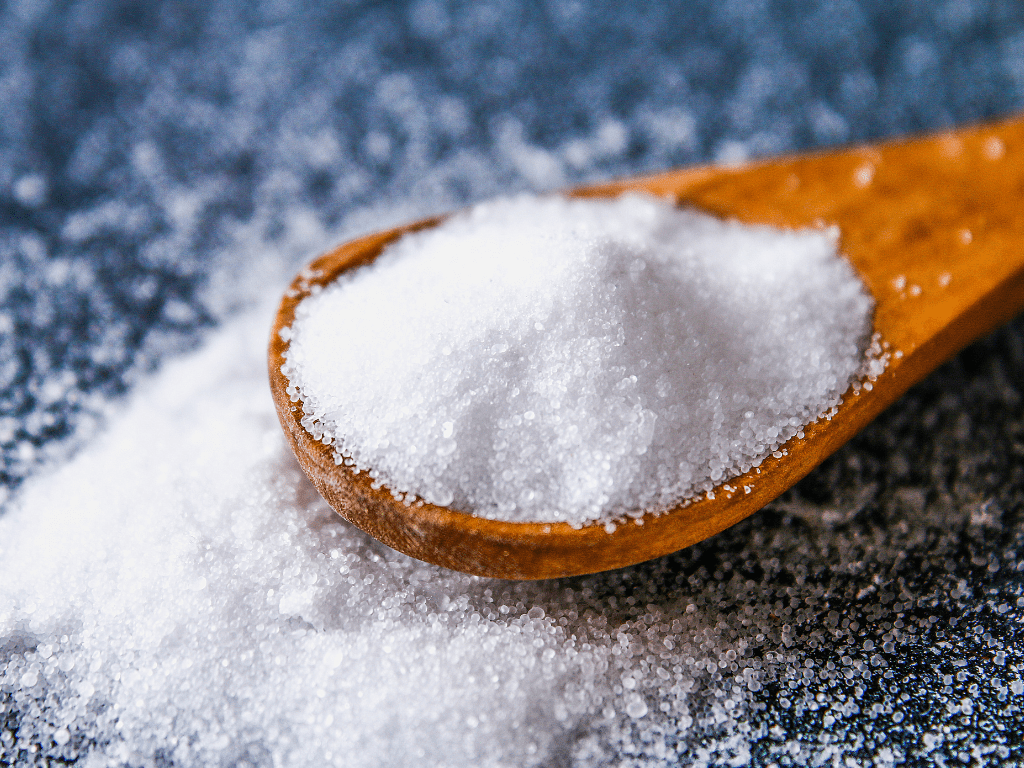
How much salt is enough?
Babies and children only need a very small amount of salt in their diet. Up until 6 months of age, babies will get the right amount of both sodium and chloride from their breast milk or first infant formula. When you start to introduce solid foods, from around 6 months, you won’t need to add any salt when cooking or at the table.
In the UK, adults are consuming around 8.4g of salt a- day, which is about a third more than the maximum recommendation.
Let’s take a look at the salt recommendations:

Ref: SACN Recommended maximum salt intakes (PDF, 373KB)
Salt FAQ’s
“I don’t add salt when I cook. Do I still need to watch my families salt intake?”
Even if you don’t add salt when cooking, or at the table, it’s still possible to have too much. Here is where we get most of our salt intake from:
- 61% from foods we buy
- 21% from salt that’s naturally present in foods, such as: celery, beetroot and milk
- 18% discretionary salt- those that we add during cooking and at the table.
Ref: Action on Salt (opens in new tab)
“If three quarters of the salt we eat comes from the food we buy, which products do I need to be mindful of ?”
Similar food products can have different levels of salt. The best way to tell is by looking at the nutritional information on the food label. This will help you to compare different brands, varieties and help you to choose the lower salt options.
Some food products have traffic light colours on the label to help you make your choice. With traffic light colours, you can see at a glance if the food you’re looking at has a high, medium or low amount of salt.
Try to only eat high-salt foods occasionally, and in small amounts, and aim to eat foods that are green or amber. You can find out more information on reading food labels here! (opens in new tab)
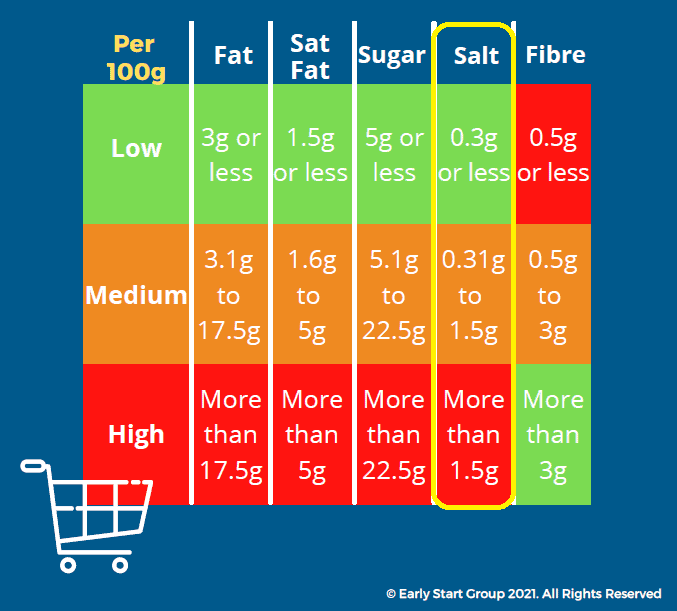
Download your Label Reading Card (PDF, 26KB)
If there’s no traffic light colours on the label, you can still choose lower salt products using the following steps:
- Check the information on the back or side of the packaging which tells us the energy content of the products, plus the amounts of fat, sugar and salt it contains
- Nutrition information is normally displayed as per 100 grams (100g) of the product, and sometimes per portion (such as ‘one slice’)
- When shopping for foods, it’s best to look at the ingredients per 100g, as this allows you to make an easy comparison between different products. The trouble with using the ‘per portion’ information, is that the portion sizes are often different and it can be difficult to accurately compare which is the more nutritious option
- Choosing products that have less than 0.3g of salt per 100g means it is low in salt and a better choice than a product that has more than 1.5g of salt per 100g
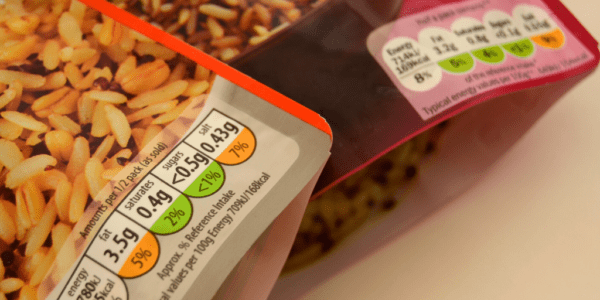
Top Tip:
On some nutrition labels, sodium is listed instead of, or as well as, salt. To convert sodium to salt, you need to multiply the sodium amount by 2.5. It’s the sodium part of salt that affects blood pressure.
If the label doesn’t say how much salt or sodium the food contains, look at the ingredients list. The closer to the top of the list salt, sodium chloride, monosodium glutamate (MSG), sodium bicarbonate (baking soda) and sodium nitrate (a preservative) appears, the more salt or sodium it’s likely to have in it!
High Salt Foods Can Include:
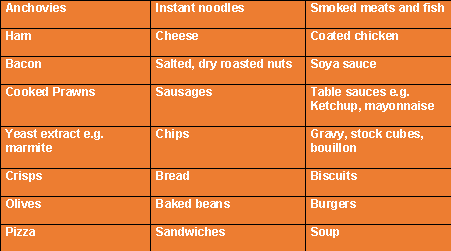
Simple Swaps – how to meet the salt recommendations for children and adults
Lots of little changes can make a big difference over time. Here are some of our top tips for helping families to reduce their salt intake:
- Gradually reduce your salt intake to readjust your taste buds. Replace salt with ingredients such as: chilli, lemon, lime, fresh herbs, garlic, black pepper and spices.
- Cut back on sauces such as soy sauce, ketchup and salad dressings (try swapping to low salt varieties).
- Use lower salt-stock cubes, or make your own by using low salt options like vegetable cooking juices.
- Choosing a breakfast cereal with less salt. Check nutrition labels and choose those with no added salt e.g. Weetabix
- Taste your food before you season it.
- Instead of adding salt, marinade your meat with citrus fruits, garlic and olive oil.
- Avoid ready-made marinades and seasoning mixes.
- Switch salty snacks like crisps for toasted pitta or roasted vegetable slices
- Choose unsalted nuts instead of salted nuts (avoid whole nuts for under 5’s due to the risk of choking – instead offer smooth nut butters or ground nuts)
- Swap salty processed meats, like bacon and sausages, for white meats like chicken or turkey.
- Go meat-free once a week. Processed meats can be high in salt, so try switching it up for vegetable proteins and pulses.
- Buy tinned foods, such as beans, pulses, fish and vegetables, with no added salt.
- Bring your own lunch. If you buy a prepared sandwich for lunch every day, you could be eating lots of salt. Make your own fillings (e.g. chicken, egg, mozzarella), instead of ham or cheddar cheese.
- Make your takeaway favourites at home! Whether its pizza, sweet and sour chicken, or a spicy curry – these dishes are easy and cheap to make from scratch at home.
You can also check out our blog How to Add Flavour Without Using Salt (opens in new tab) for lost of tasty ways to flavour your favourite dishes.

What are the recommendations for reducing salt intake in Nursery or Childminding settings?
The guidelines that support early years settings to plan meals for children are the Eat Better Start Better guidelines (PDF, 5.2MB).
Early years settings provide a great opportunity for children to try a range of balanced and nutritious food across the day. To establish good eating habits, the food and drink provided for children should not be high in saturated fat, sugar or salt.
Limiting or avoiding some foods, ingredients and cooking practices will help to ensure an appropriate amount of fat, sugar and salt is provided for children, and will also help encourage diversity in children’s diets.
Try to cook food from scratch wherever possible, and ensure catering companies are considering the following EBSB guidelines when sourcing foods/ ingredients and during cooking.
Potatoes, bread, rice, pasta and other starchy carbohydrates
- Choose bread and bread products with a lower salt content. Choose those which are labelled as ‘low’ (green) or ‘medium’ (amber) in salt
- Avoid flavoured dried rice, pasta and noodle products which can be high in salt e.g. packets and pots of instant flavoured noodles, pasta and rice.
Fruit and Vegetables
- Choose canned vegetables and pulses without added salt
Choose reduced salt and sugar baked beans.
Beans, pulses, fish, eggs, meat and other proteins
- Check product labels to choose canned pulses without added salt
- Meat and fish products, and products made from meat alternatives can be high in salt. For this reason its important to limit these to no more than once per week e.g. sausages, burgers, individual pies, fish fingers and vegetarian sausages.
Top Tips:
- Don’t add salt when cooking for young children. Instead, flavour savoury dishes using a variety of vegetables, herbs and spices
- Don’t provide salt for children to add to their food. Instead use pepper or herbs and spices
- Limit the use of ready made sauces (dried or liquid), soups, stocks and gravy granules. Instead cook sauces from raw ingredients, and thicken sauces with cornflour instead of gravy granules
- Limit the use of condiments such as ketchup
- Avoid salty snacks such as crisps.

“Are other types of salt better for me?”
Whether it’s pink, black, rock, crystal or flakes, these salts have the same effect on your blood pressure as standard table salt! Although less refined salts might contain more nutrients than everyday table salt, these are usually in very small amounts and can be sourced from other foods in your diet. Bigger crystals also taste less salty, so you are likely to add more than refined salt.
There are lots of different types of salt, for example:
- sea salt
- rock salt
- himalayan pink salt
- garlic salt
- kosher salt.
Remember, no one type is better or worse for you – salt is salt and will have the same effect on your blood pressure!
There are also low salt alternatives which have less sodium than regular salt. While they can be useful in helping you to eat less sodium, but they won’t help you kick the habit of eating salty foods, so it’s still better to just eat less of it.
*Check with your doctor before using these salt alternatives, as they contain potassium which aren’t suitable for some people with existing health conditions.
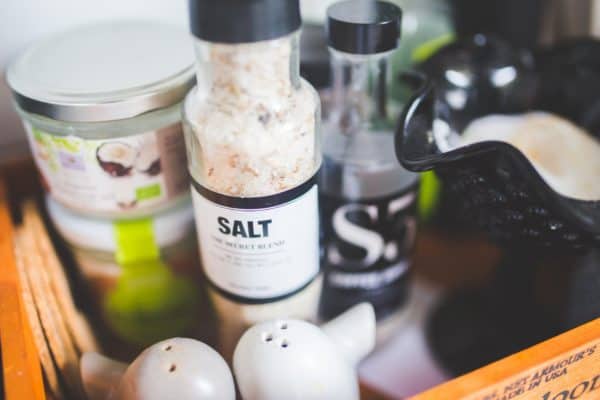
Low Salt Recipes:
Here are some of our favourite low salt recipes, include homemade bread and pizza!
Homemade White Bread- find the full recipe here (opens in new tab)

Home Made Pizza – find the full recipe here (opens in new tab)

Spiced Carrot and Lentil Soup – find the full recipe here (opens in new tab)
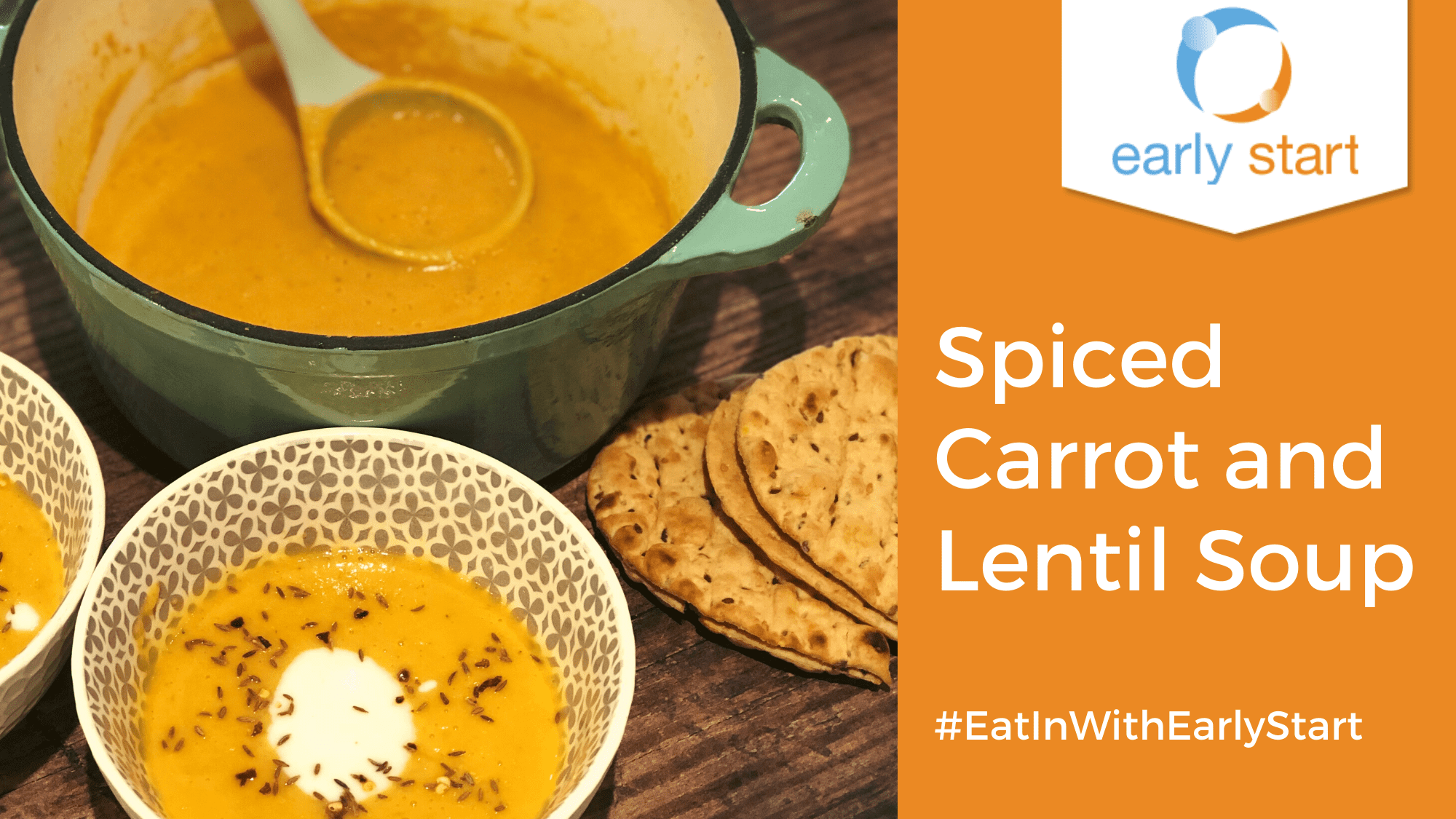
Fish Finger and Potato Wedges – find the full recipe here (opens in new tab)
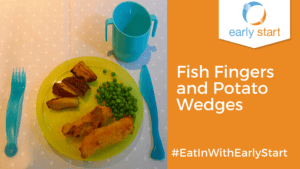
We also love this cookbook from the World Action on Salt and Health, which has loads of heart healthy recipes from around the world ‘The international low salt cookbook’. (PDF, 5MB)

Although salt is needed in the body, regulating it is important. This blog has great recommendations of salt intake for children and adults alike. Thanks for sharing!
Thanks for your comment Barbara. We’re happy to hear you think it’s a useful blog.
Best wishes,
Georgia